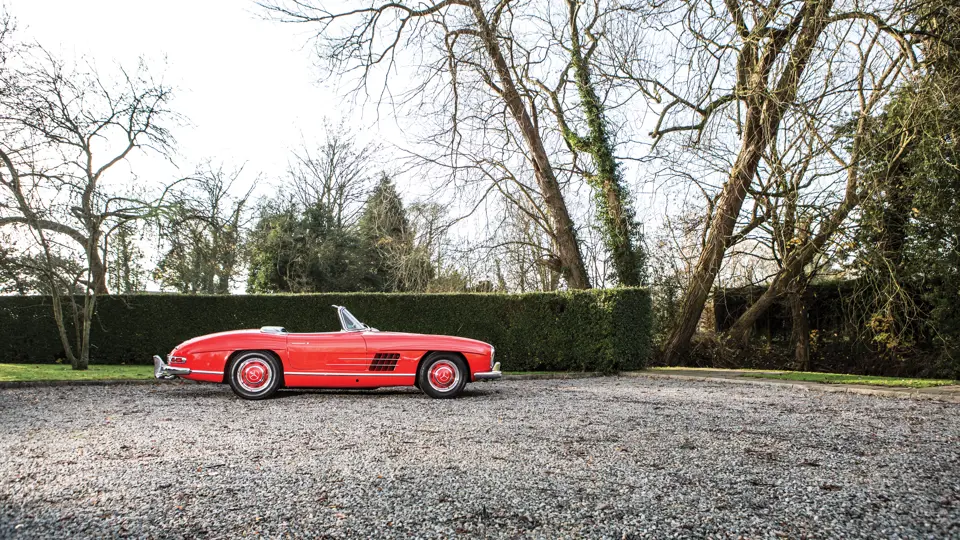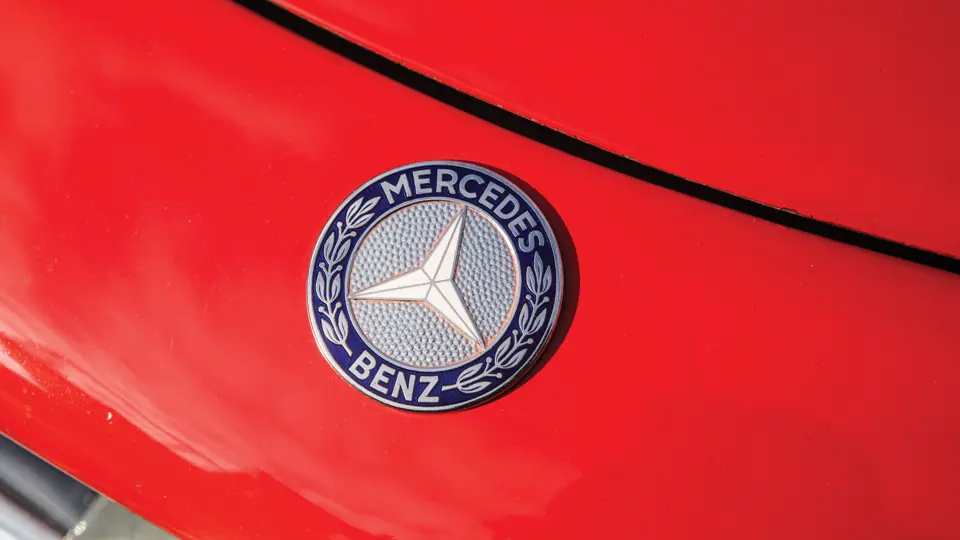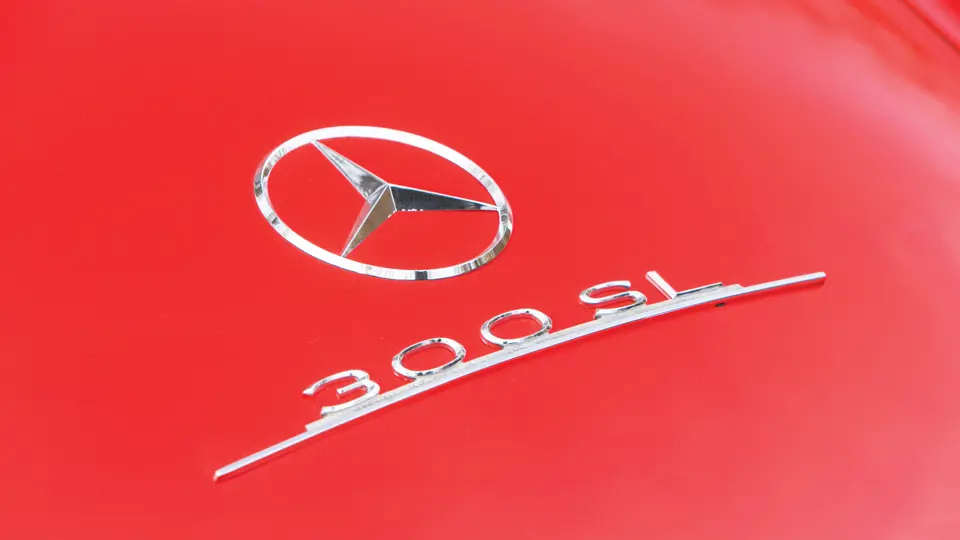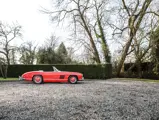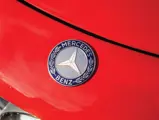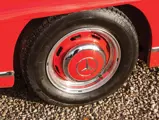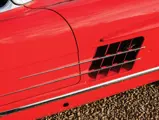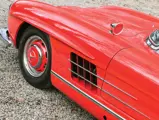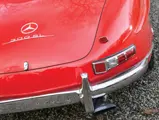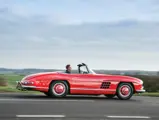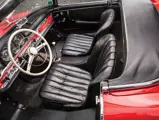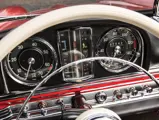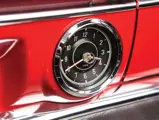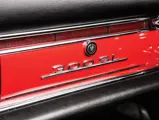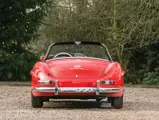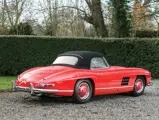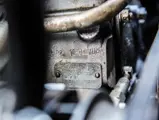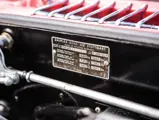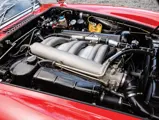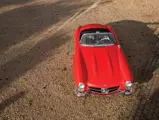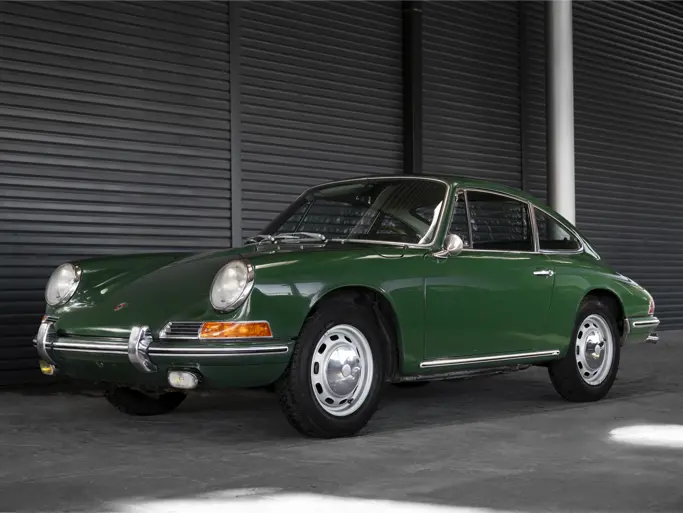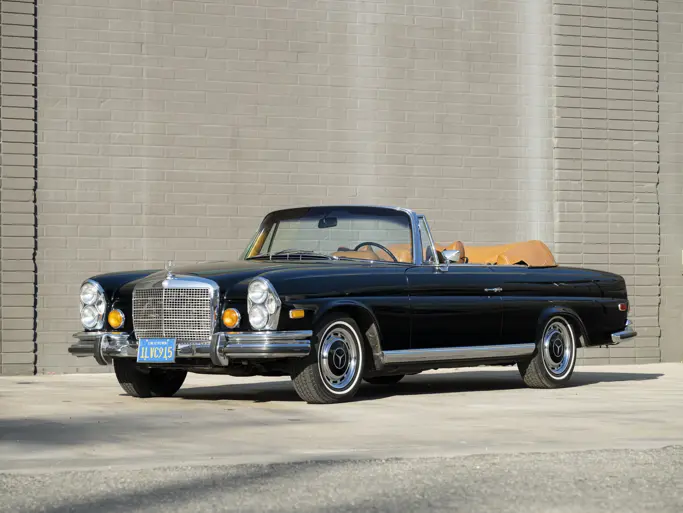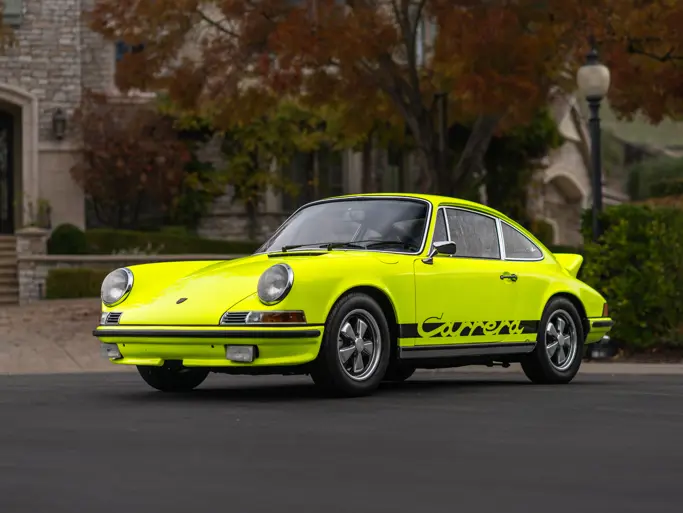
1963 Mercedes-Benz 300 SL Roadster
{{lr.item.text}}
€1,232,000 EUR | Sold
{{bidding.lot.reserveStatusFormatted}}
- Factory disc brakes and an alloy block
- Matching numbers; believed to have had three private owners from new
- Delivered new in Fire Red (DB 534)
- All of the best original factory features
- An exceptionally original 300 SL Roadster
- Freins à disque et bloc aluminium d’usine
- Numéros concordants (matching numbers) ; trois propriétaires connus
- Vendue neuve peinte en Rouge Feu (DB 534)
- Toutes les meilleurs spécifications d’usine
- Une 300 SL Roadster dans un état d’origine exceptionnel
225 bhp (DIN), 240 bhp (SAE), 2,996 cc SOHC inline six-cylinder engine with Bosch mechanical fuel injection, four-speed manual gearbox, independent front suspension with upper and lower A-arms and coil springs, independent rear suspension with coil springs and swing axles, and four-wheel hydraulic disc brakes. Wheelbase: 2,400 mm.
Moteur à six cylindres en ligne à 1 ACT, 2 996 cm3, 225 ch DIN/240 ch SAE, injection mécanique Bosch, boîte de vitesses manuelle à quatre rapports, suspension avant indépendante par triangles superposés et ressorts hélicoïdaux, suspension arrière à essieu brisé avec ressorts hélicoïdaux, quatre freins à disque hydrauliques. Empattement: 2 400 mm
There was no doubt that Mercedes-Benz had a hit on their hands with their spectacular 300 SL Gullwing, as it would become known. The car’s looks, performance, and brilliant engineering captivated the automotive world, and it proved to be a runaway success for Mercedes-Benz. As production was soon coming to an end for the iconic 300 SL Coupé, the marque grew more eager to add a convertible version to its line-up.
A prototype of this new model was first spotted by German magazine Auto, Motor und Sport at Stuttgart in the summer of 1956, and the production model would later debut at the 1957 Geneva Motor Show. By the end of that year, the final 70 of the 1,400 coupés and the first 618 of the roadsters were assembled.
Along with a convertible top, the 300 SL brought a host of advancements to the already state-of-the-art platform. The central section of the 300 SL’s space-frame chassis was lowered, and smaller sills and enlarged doors were added to improve entrance and egress. Its strength was maintained, nonetheless, with the addition of diagonal struts bracing the lowered side sections to the rear tubular members. The suspension was also revised to allow for a more comfortable ride and improved handling. At the rear, the spare tyre was repositioned below the boot floor, necessitating a smaller fuel tank but also maintaining reasonable luggage space. Even though these revisions added some 250 pounds, the majority of which were associated with the convertible top and its mechanisms, the car remained an excellent performer, with a factory-claimed 137-mph top speed.
Just like the 300 SL Gullwing, the Roadster proved to be the vehicle of choice for those with brilliant taste in aesthetics and cutting-edge engineering. As such, many wound up in the garages of celebrities, racing drivers, and other financially successful individuals. With a list price of $11,000, ownership of a 300 SL was a dream to most when the car was new, and to those with the funds to spare, the car was worth every penny. To those looking to make a statement with the purchase of a new car, there was simply no better option.
CHASSIS NUMBER 198.042.10.003135
The car offered here, chassis number 198.042.10.003135, was built at the end of 1962, and thus, it benefits from being a late-production 300 SL with the two most desirable features, disc brakes and an alloy engine block. The upgraded brakes provided modern stopping power to suit the car’s performance and chassis engineering, whilst the alloy block significantly lightened the nose of the 300 SL and improved its handling. Together, they made for what is widely considered to be the “ultimate” 300 SL Roadster configuration, which was used on only the final 210 cars produced in late 1962 and 1963.
According to its data card, information from which has been supplied by Daimler-Benz and is on file, this Roadster was sold new in the United States and finished as it appears today, in Fire Red (DB 534) with a black interior. It is believed to have enjoyed only three private owners from new, with its most long-term caretaker having been Gull Wing Group member Pedro Garcia, of Georgia, who owned the car from 1974 until 2011. The car was then sold to respected enthusiast and connoisseur of all fine things, Jean-Claude Biver, who was the chairman of Hublot, Blancpain, and other fine watch manufacturers, as well as a noted turophile.
Monsieur Biver acquired the 300 SL from German marque specialists at HK Engineering, who, according to the present owner, recently described the car as being “one of the most original and best they’ve ever seen”. Inspection indicates fine originality, down to the car’s original colour combination and interior, and it is believed that the current reading of 61,000 miles on the odometer is genuine. The car is complete with a large history file that dates back to 1974, as well as its owner’s, service, and parts manuals, technical data, and operating instructions.
This ultimate-specification 300 SL Roadster is, without a doubt, one of the most original, well-maintained examples to have been offered for sale in recent years. It represents the very best available, and as with all fine things, this 300 SL has only gotten better with age.
Il ne fait aucun doute que Mercedes-Benz tenait un chef-d’œuvre avec sa spectaculaire 300 SL papillon, comme elle sera surnommée. Le style de la voiture, ses performances et l’excellence de sa mécanique fascinèrent le monde automobile et elle valut à Mercedes-Benz un succès fou. Lorsque la production de l’emblématique coupé 300 SL approcha de sa fin, la marque voulut ajouter une version décapotable à son offre.
Un prototype de ce nouveau modèle fut repéré d’abord par le magazine Auto, Motor und Sport à Stuttgart à l’été 1956 et le modèle de série apparut plus tard au salon de Genève 1957. À la fin de cette année-là, les 70 derniers des 1 400 coupés et les 618 premiers roadsters 300 SL avaient été assemblés.
Outre une capote, la 300 SL introduisit une série d’améliorations sur son châssis déjà très élaboré. La partie centrale du cadre en treillis tubulaire fut abaissée pour installer des seuils surbaissés et des portes normales facilitant l’accès à bord et la sortie. Néanmoins, sa rigidité fut préservée par ajout de renforts en diagonale reliant la section latérale abaissée aux éléments structurels de l’arrière. La suspension fut aussi révisée pour améliorer le confort et la tenue de route. À l’arrière, la roue de secours repositionnée sous le plancher du coffre entraîna la diminution de la capacité du réservoir, mais avec une capacité de bagages augmentée. Même si ces changements se traduisaient par un poids en hausse de 112 kg environ, la majorité de ces derniers étant dus à la capote et à son mécanisme, les performances demeuraient excellentes avec une vitesse de pointe annoncée de 220 km/h.
Comme la 300 SL papillon, la Roadster fut choisie par ceux qui appréciaient la beauté et le raffinement mécanique le plus poussé. C’est ainsi que ces voitures arrivèrent dans le garage des célébrités, des pilotes automobiles et autres personnes disposant d’une suffisante fortune. Cataloguée à 11 000 $, la possession d’une 300 SL neuve restait un rêve pour la majorité et pour ceux qui devaient économiser, elle coûtait encore plus cher. Quant aux amateurs de symbole de statut social, ils n’avaient guère d’autre choix.
LE CHÂSSIS N° 198.042.10.003135
La voiture offerte ici, châssis n° 198.042.10.003135, fut construite à la fin de 1962. Elle bénéficie donc du fait d’être une des dernières 300 SL donc d’être dotée des deux options les plus appréciables : les freins à disque et le bloc moteur en alliage léger. Les freins plus puissants et plus modernes étaient dignes d’une voiture hautement performante et de son châssis perfectionné, tandis que le bloc en alliage allégeait l’avant de façon sensible et améliorait le comportement dynamique. Ensemble, ils formaient ce qui est généralement considéré comme la configuration « ultime » de la 300 SL Roadster que l‘on trouve sur les 210 dernières voitures produites à la fin de 1962 et en 1963.
Selon la fiche de spécifications dont les données ont été transmises par Daimler-Benz et qui figure au dossier, cette Roadster fut vendue neuve aux Etats-Unis peinte telle qu’elle apparaît aujourd’hui en Rouge Feu (DB 534) avec intérieur noir. On pense qu’elle n’a connu que trois propriétaires depuis l’origine, demeurant le plus longtemps aux mains du membre du Gulf Wing Group, Pedro Garcia de Géorgie, qui la posséda de 1974 à 2011. La voiture fut alors vendue au connaisseur et passionné de belles choses, Jean-Claude Biver, président de Hublot, Blancpain et autres prestigieuses marques de montres, et réputé fin gourmet turophile (amateur de fromages).
M. Biver acheta la 300 SL aux spécialistes allemands de la marque, HK Engineering, qui selon l’actuel propriétaire, décrirent récemment la voiture comme étant « l’une des plus originales et des plus belles qu’ils avaient jamais vues ». L’examen révèle en effet un superbe état d’origine jusqu’aux teintes initiales, intérieure et extérieure. On estime que le kilométrage affiché, 61 000 miles (97 600 km) est exact. La voiture est complétée de son dossier historique remontant à 1974 et de ses manuel du propriétaire, carnet d’entretien et liste de pièces détachées, de données techniques et de conseils d’utilisation.
Cette 300 SL Roadster aux ultimes spécifications est, sans aucun doute, l’une des plus originales et des mieux entretenues jamais proposées depuis des années. Elle représente ce que l’on peut trouver de mieux et, comme toutes les belles choses, cette 300 SL s’est encore bonifiée avec les années.





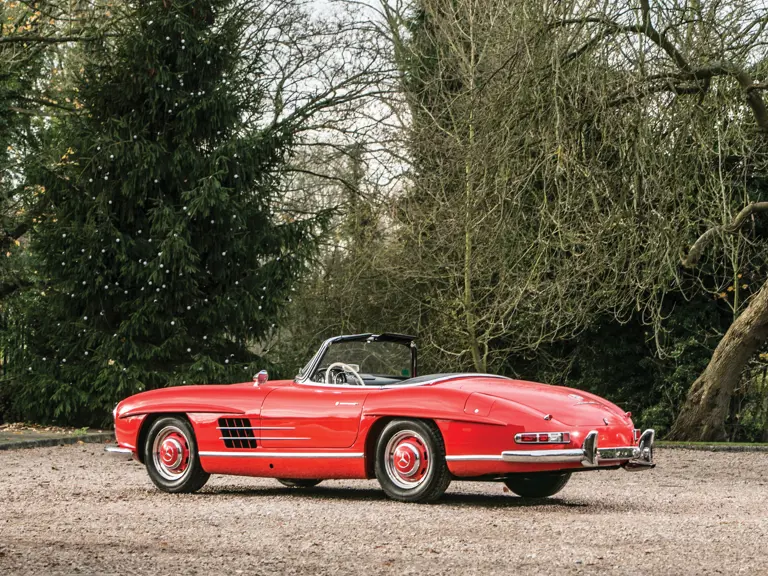
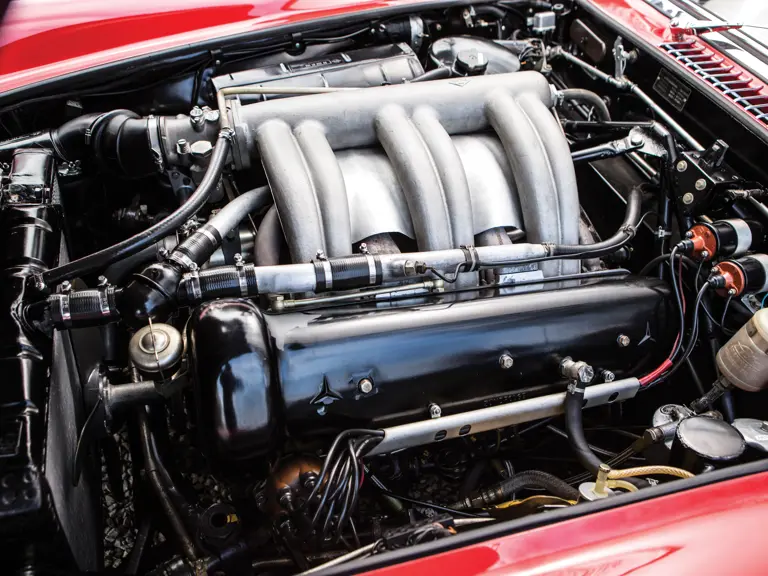
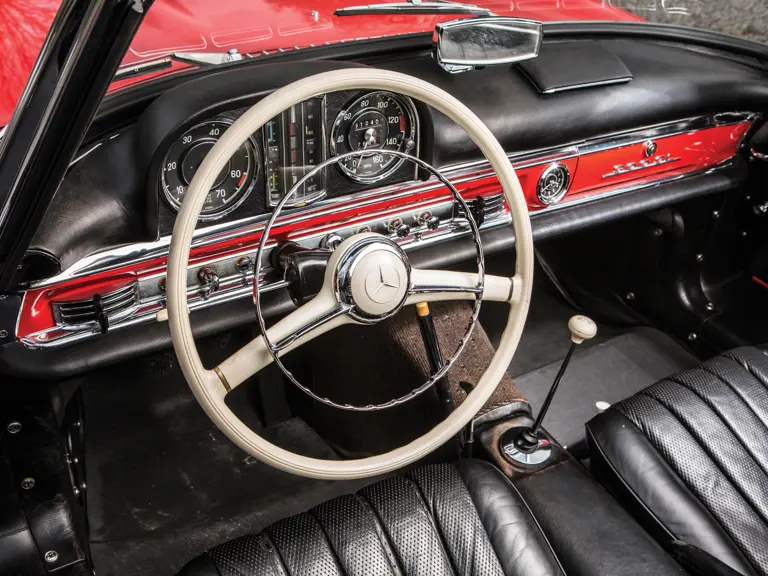
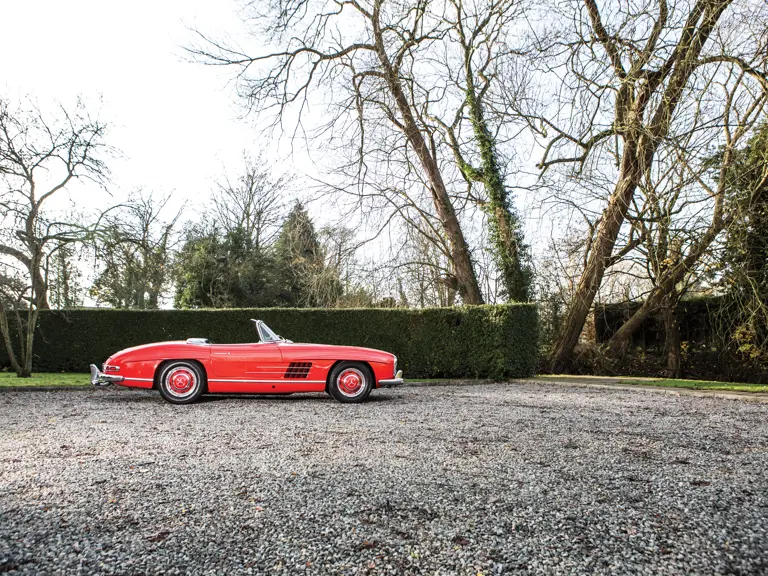
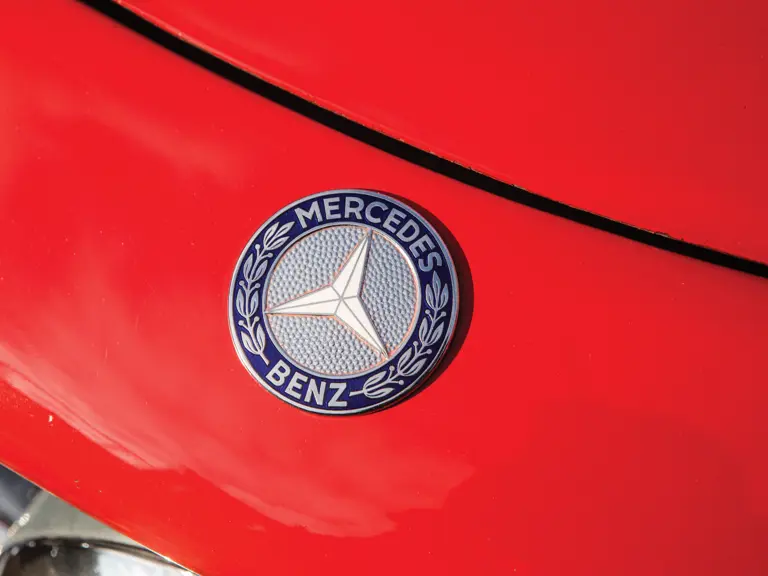


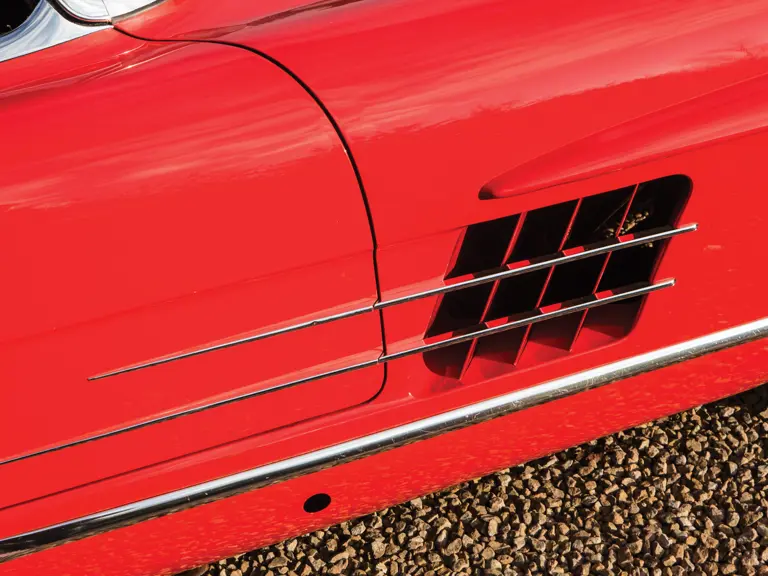
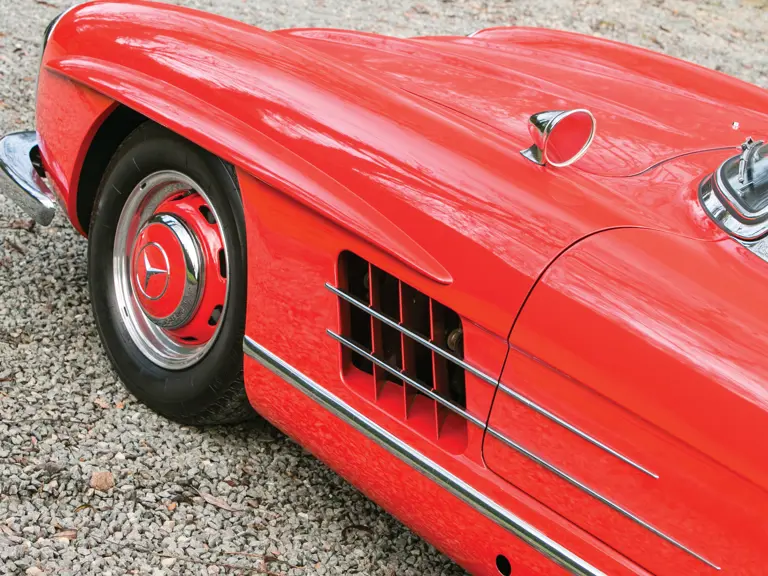
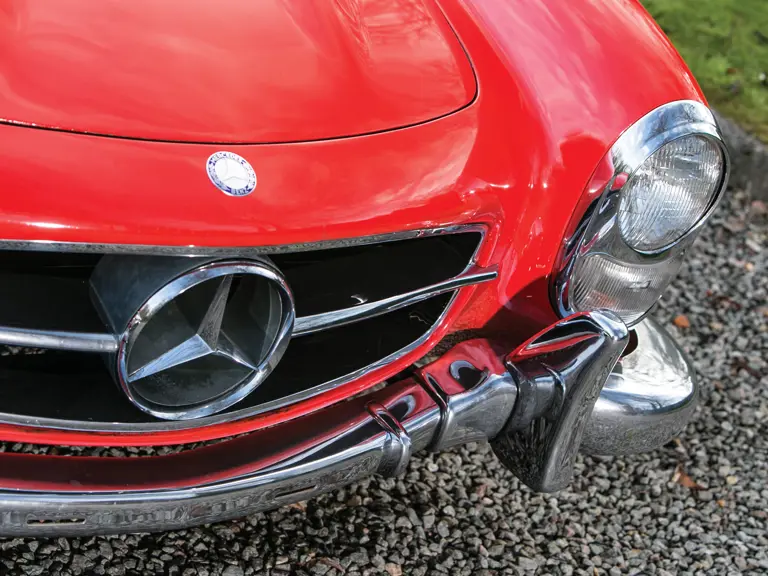
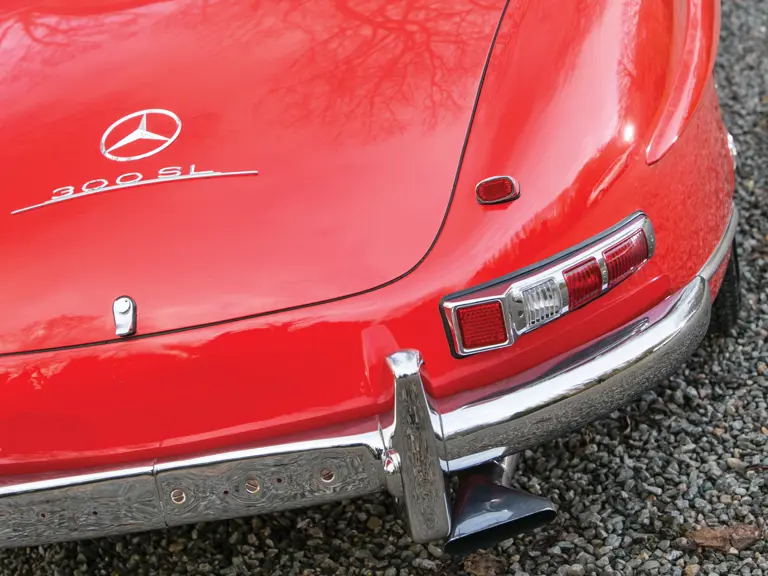
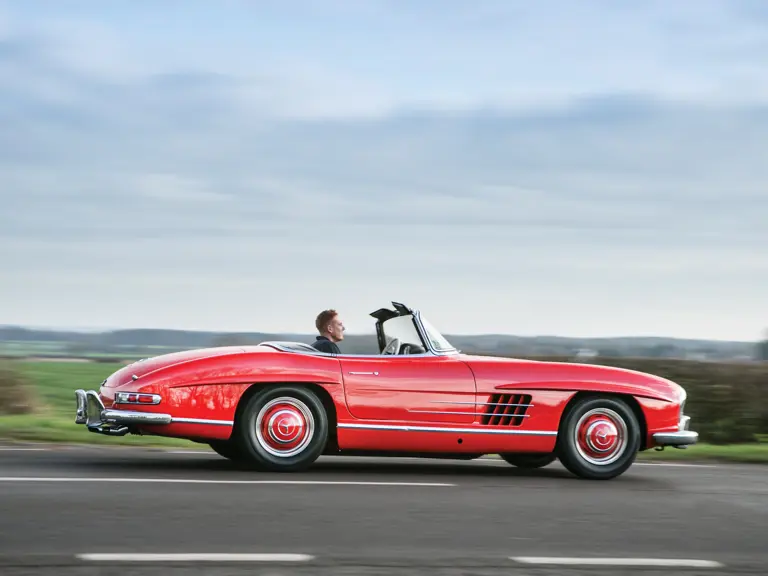
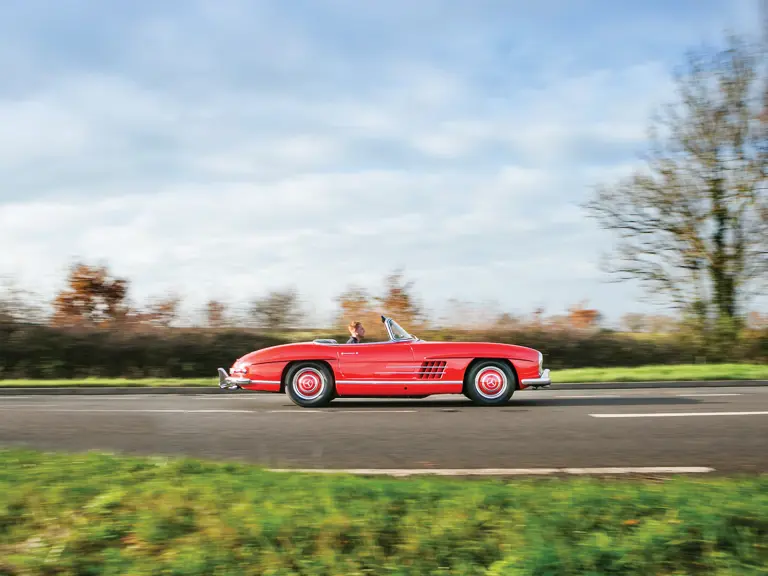
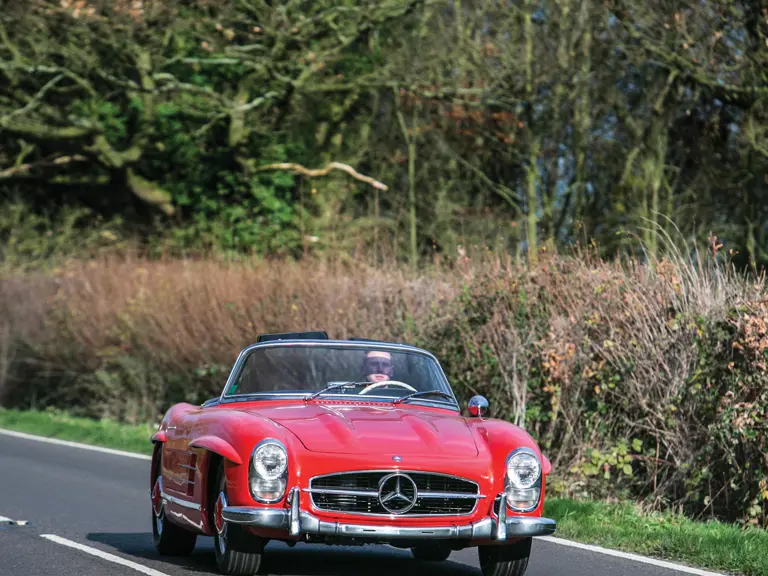

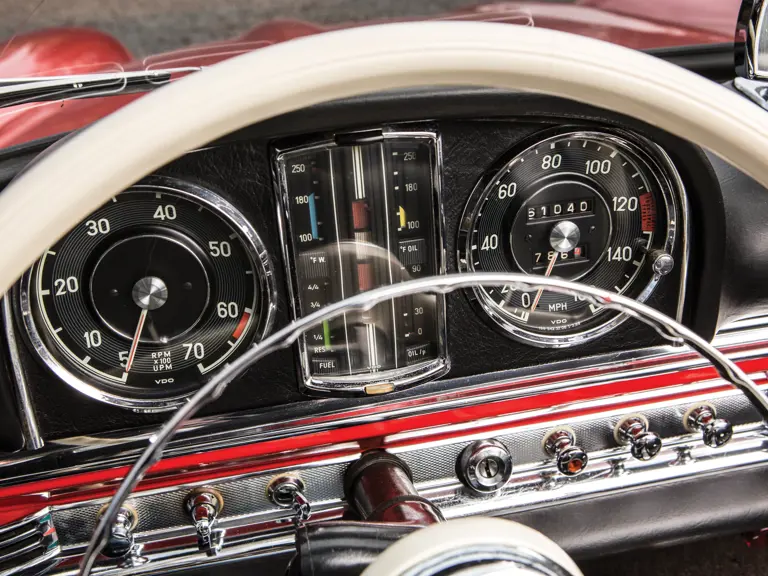
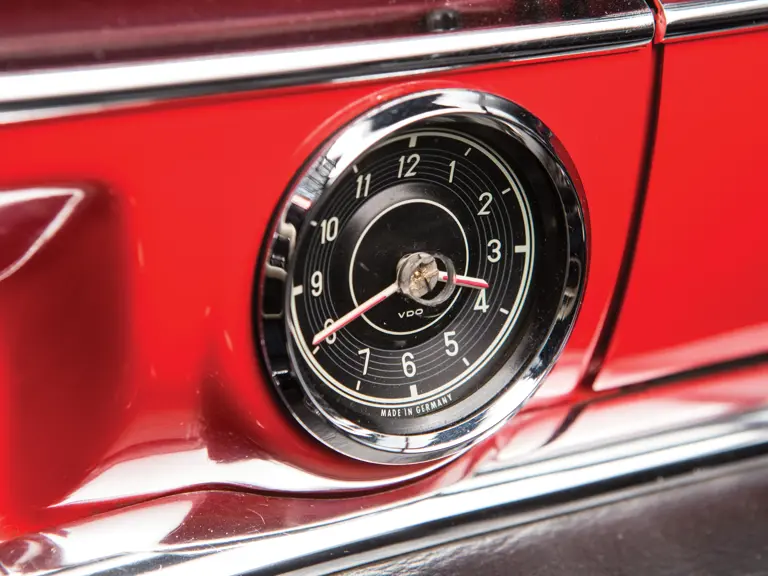
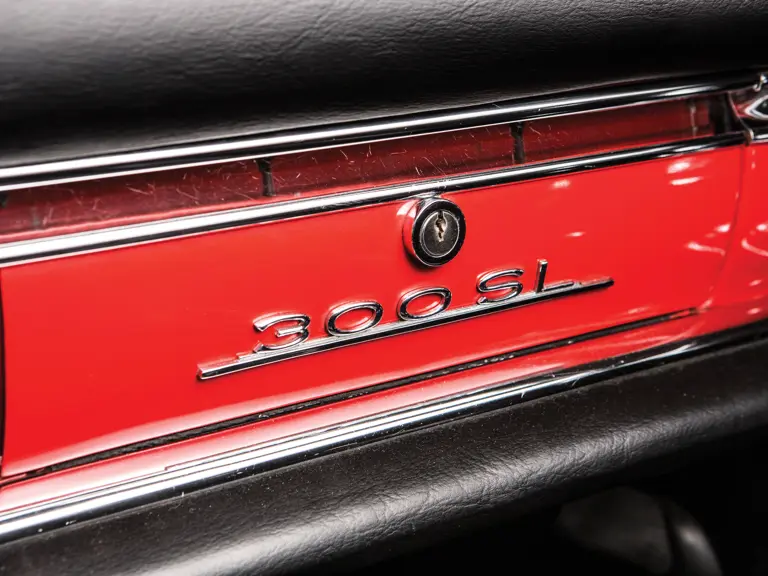
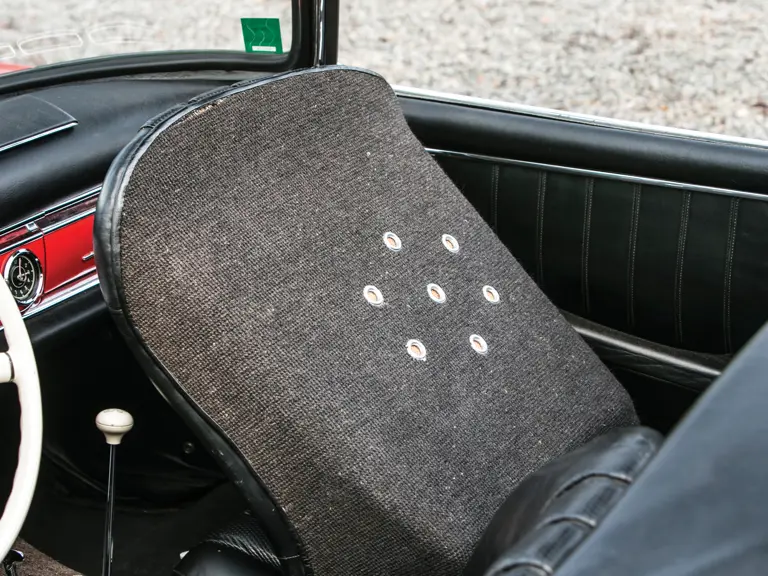
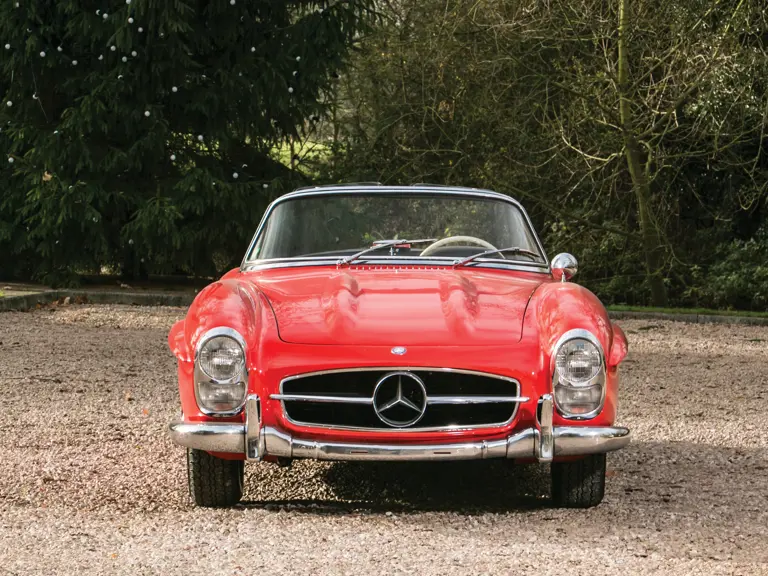
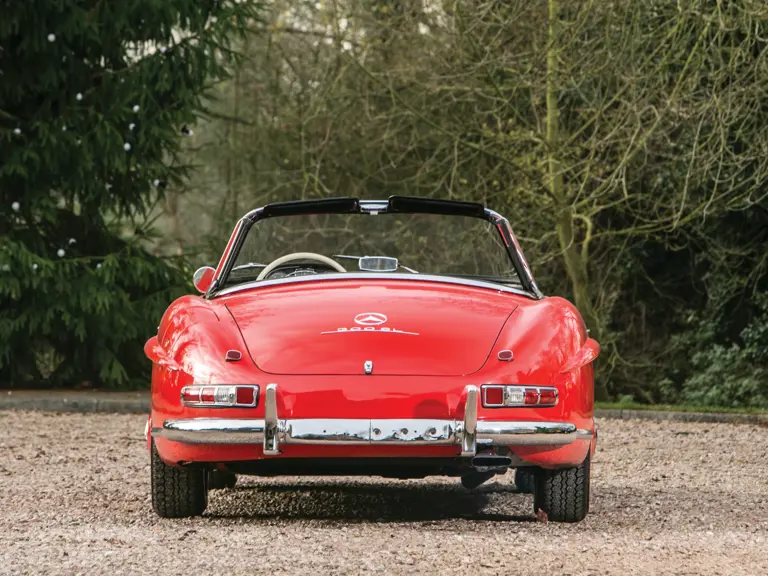
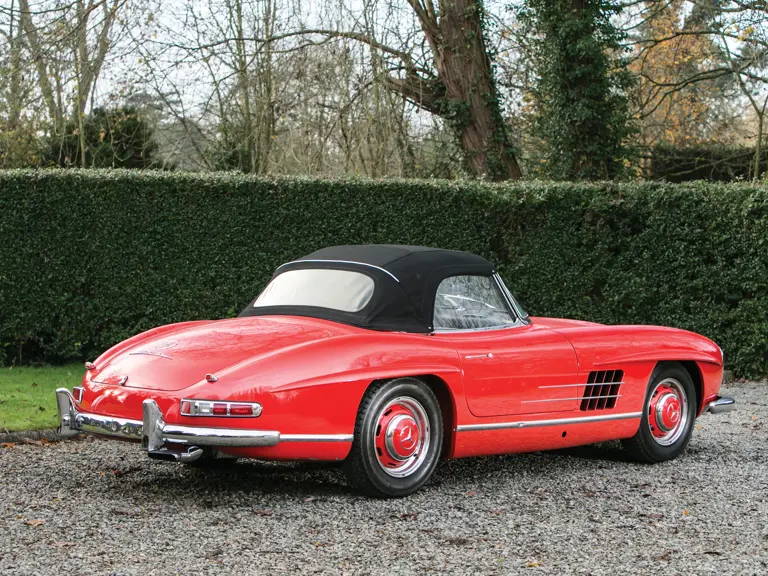
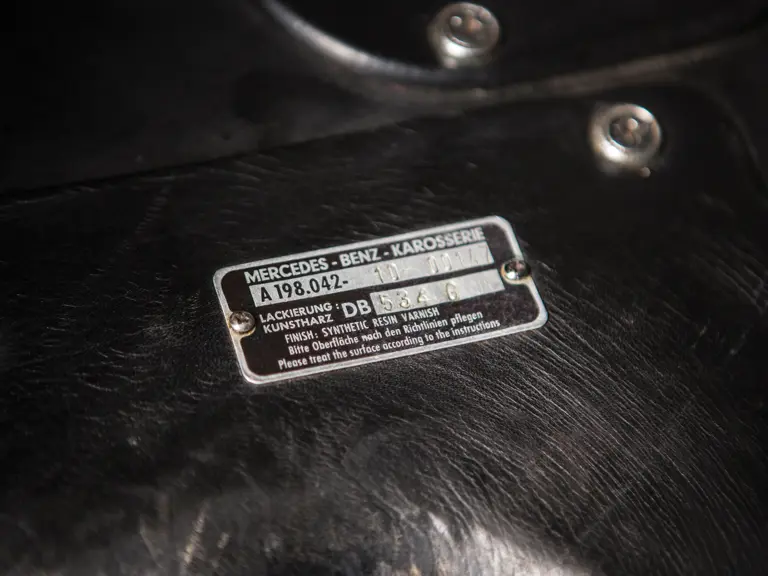
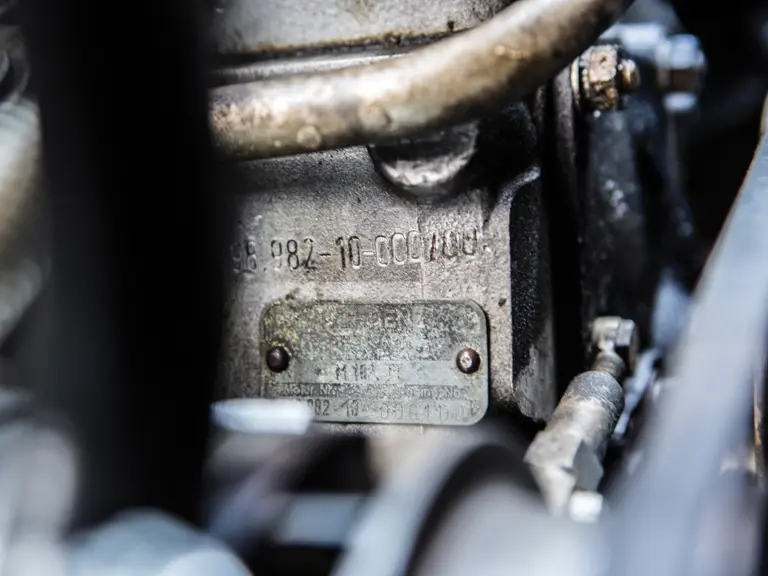
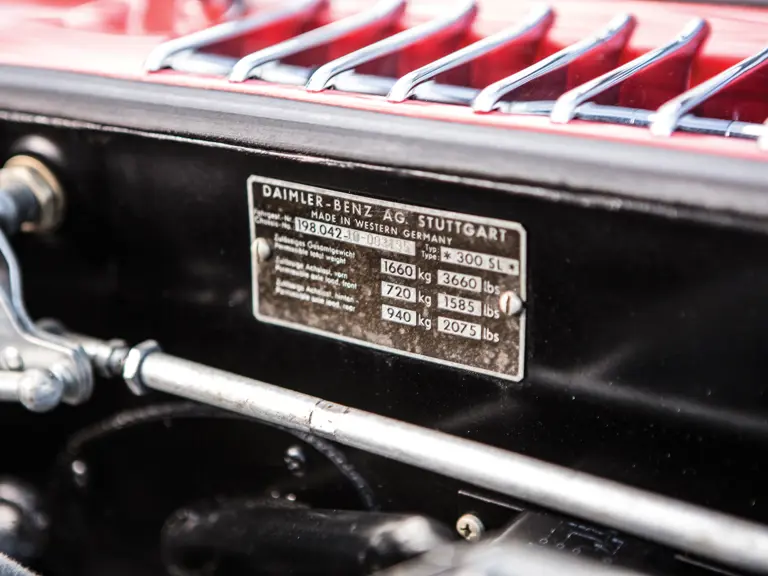
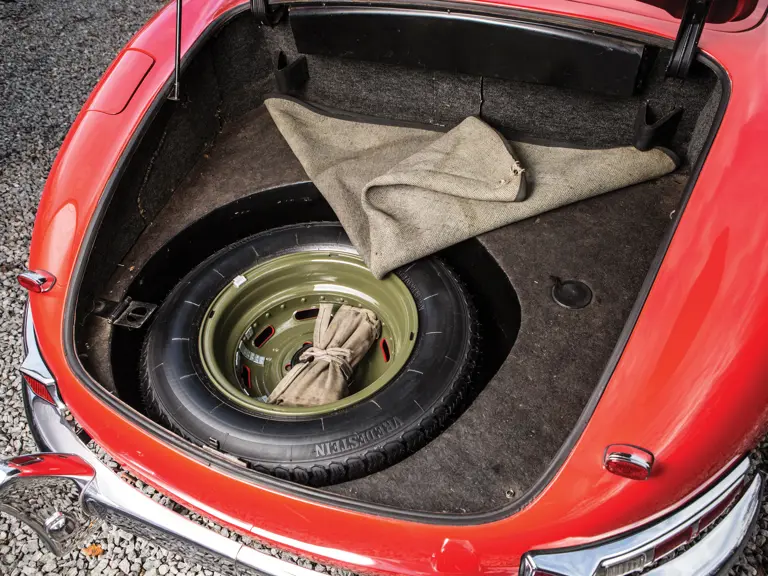

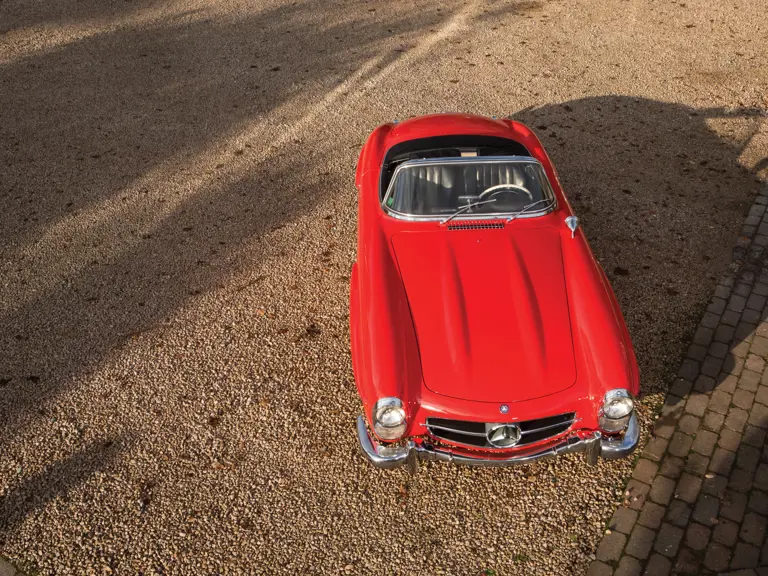

 | Paris, France
| Paris, France
